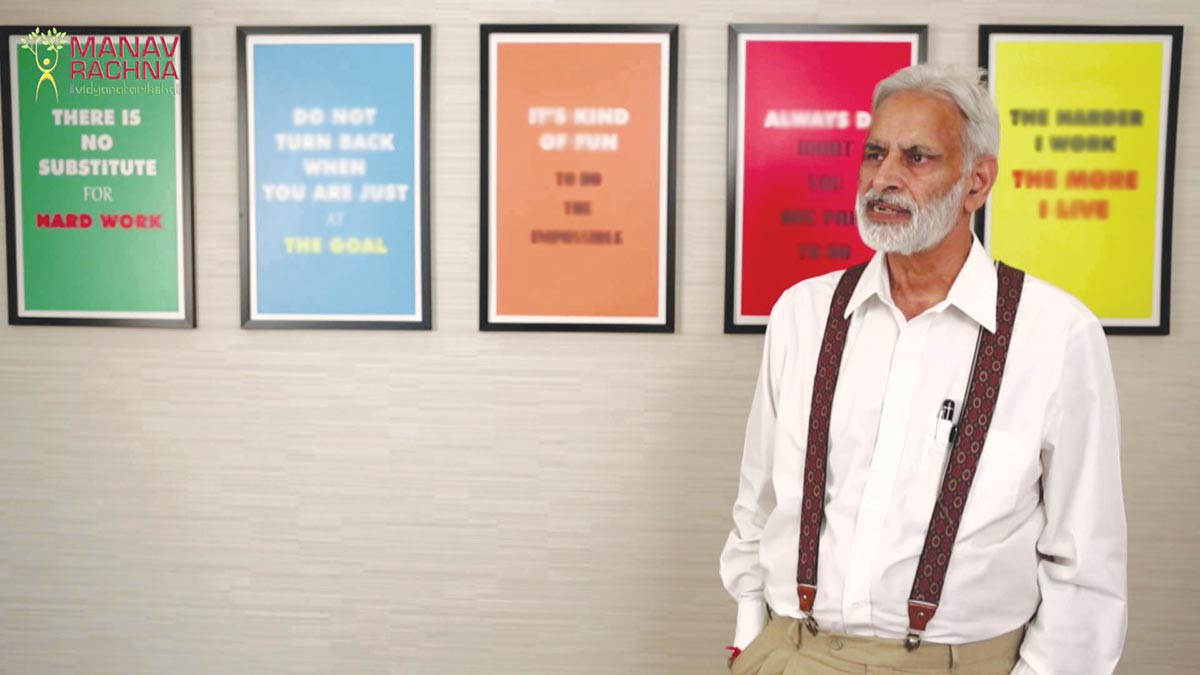
Prof. (Ar.) Jatinder Saigal, Prof. Design Chair, Deptt. of Architecture & Design, Manav Rachna International University.
Many architects imagine building surfaces, walls and facades composed entirely of smart materials, perhaps automatically enhancing their design from a pedestrian box to an interactive arcade
The relationship between architecture and materials was fairly straightforward until the Industrial Revolution with the widespread introduction of steel, leading to the emergence of long-span and high-rise building forms.
In pre-19th century, use of materials in design were subject to function and form. Materials were chosen for their utility or availability, or they were chosen for their appearance and ornamental qualities. Decisions about building & architecture determined the material choice.
The industrialization of glass-making and developments in environmental systems enabled the 'international style' in which a transparent architecture could be sited in any climate and in any context. The proliferation of curtain wall systems allowed the disconnection of the facade material from the building's structure, freeing the material choice from its utilitarian function so that the facade could become a purely formal element. Through advancements in CAD/CAM technologies, engineering materials such as aluminum and titanium were efficiently and easily used as building skins, allowing an unprecedented range of building facades and forms.
Materials have now progressively emerged for providing the most visible and thereby the most appropriable manifestation of a building's representation, both interior and exterior. Today's materials as part of a design, and are applied as compositional and visual surfaces.
Smart materials and technologies
Smart materials and technologies are often considered to be a logical extension of the trajectory in materials development for more selective and specialized performance. During the 20th century one begin to select or engineer the properties of a high performance material to meet a specifically-defined need.
Smart materials and technologies allow even a further specificity - their properties are changeable and thus responsive to transient needs. For example, photochromic materials change their color (the property of spectral transmissivity) when exposed to light: the more intense the incident light, the darker the surface.
This ability to respond to multiple states rather than being optimized for a single state has rendered smart materials. Many architects further imagine building surfaces, walls and facades composed entirely of smart materials, perhaps automatically enhancing their design from a pedestrian box to an interactive arcade. Indeed, terms like interactivity and transformability have already become standard in an architect's vocabulary, even in so far as the necessary materials and technologies are far beyond the economic and practical reality of most building projects. Smart materials and technology represent a radical departure from the more normative building materials, and are dynamic as they behave in response to energy fields.
Understanding smart materials
One must understand the characteristics that distinguish smart materials and technology from the more commonly used architectural materials, and speculate their potential when deployed in architectural design. Smart materials and technology is a molecule, a material, a composite, an assembly, or a system will exhibit the following characteristics:
- Immediacy- they respond in real-time.
- Transiency- they respond to more than one environmental state.
- Self- actuation- intelligence is internal to rather than external to the 'material'.
- Selectivity- their response is discrete and predictable.
- Directness- the response is local to the 'activating' event.
Some materials undergo changes in one or more of their properties - chemical, mechanical, electrical, magnetic or thermal - in direct response to a change in the external stimuli associated with the environment surrounding the material. A photochromic material, for example, changes its color in response to a change in the amount of ultraviolet radiation on its surface.
Smart materials and technology are those that transform energy from one form to output energy in another form, and again do so directly and reversibly. These materials are piezoelectrics, thermoelectrics, photovoltaics, pyroelectrics, photoluminescents and others.
Thermochromic: an input of thermal energy (heat) to the material alters its molecular structure, which now has a different spectral reflectivity from its original structure. As a result, the material's 'color', that is, its reflected radiation in the visible range of the electromagnetic spectrum, changes.
Magnetorheological: the application of a magnetic field (or for electrorheological - an electrical field) causes changes in its micro-structural orientation, resulting in a change in viscosity of the fluid.
Thermotropic: an input of thermal energy (or radiation for a phototropic, electricity for electrotropic and so on) to the material alters its micro-structure through a phase change. In a different phase, most materials demonstrate different properties, including conductivity, transmissivity, volumetric expansion, and solubility.
Shape Memory: an input of thermal energy (which can also be produced through resistance to an electrical current) alters the microstructure through a crystalline phase change. This change enables multiple shapes in relationship to the environmental stimulus.
Photovoltaic: an input of radiation energy from the visible spectrum (or the infrared spectrum for a thermo-photovoltaic) produces an electrical current (the term voltaic refers more to the material which must be able to provide the voltage potential to sustain the current).
Thermoelectric: an input of electrical current creates a temperature differential on opposite sides of the material. This temperature differential produces a heat engine, essentially a heat pump, allowing thermal energy to be transferred from one junction to the other.
Piezoelectric: an input of elastic energy (strain) produces an electrical current. Most piezoelectrics are bi-directional in that the inputs can be switched, and an applied electrical current will produce a deformation (strain).
Photo-luminescent: an input of radiation energy from the ultraviolet spectrum (or electrical energy for an electroluminescent, chemical reaction for a chemoluminescent) is converted to an output of radiation energy in the visible spectrum.
Electrostrictive: the application of a current (or a magnetic field for a magnetostrictive) alters the inter-atomic distance through polarization. A change in this distance changes the energy of the molecule, which in this case produces elastic energy - strain. This strain deforms or changes the shape of the material.















